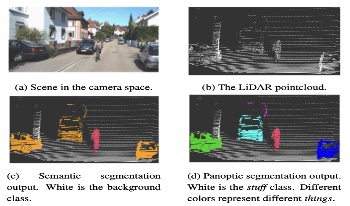
This survey provides a comprehensive overview of LiDAR-based panoptic segmentation methods for autonomous driving. We motivate the importance of panoptic segmentation in autonomous vehicle perception, emphasizing its advantages over traditional 3D object detection in capturing a more detailed and comprehensive understanding of the environment. We summarize and categorize 42 panoptic segmentation methods based on their architectural approaches, with a focus on the kind of clustering utilized: machine learned or non-learned heuristic clustering. We discuss direct methods, most of which use single-stage architectures to predict binary masks for each instance, and clustering-based methods, most of which predict offsets to object centers for efficient clustering. We also highlight relevant datasets, evaluation metrics, and compile performance results on SemanticKITTI and panoptic nuScenes benchmarks. Our analysis reveals trends in the field, including the effectiveness of attention mechanisms, the competitiveness of center-based approaches, and the benefits of sensor fusion. This survey aims to guide practitioners in selecting suitable architectures and to inspire researchers in identifying promising directions for future work in LiDAR-based panoptic segmentation for autonomous driving.
Aditya Dusi, Bassam Helou, "LiDAR Panoptic Segmentation for Autonomous Driving: A Survey" in Electronic Imaging, 2025, pp 115-1 - 115-8, https://doi.org/10.2352/EI.2025.37.15.AVM-115
 Find this author on Google Scholar
Find this author on Google Scholar Find this author on PubMed
Find this author on PubMed